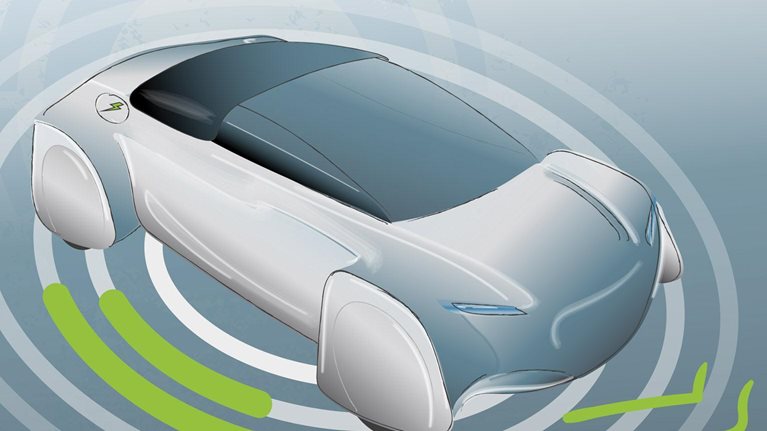Quick quiz: What percent of 2016 vehicle miles traveled (VMT) in the United States came from ridesharing? Given the hype, it would be reasonable if your estimate were higher than the right answer—1 percent. Currently, ridesharing does not apply in any significant way to the overwhelming majority of practical use cases. Car ownership is still more economical and convenient for most car owners and users, and for all of the buzz and excitement, when we count VMT in absolute terms, ridesharing’s share is almost a rounding error.
Stay current on your favorite topics
That’s not meant to belittle ridesharing’s impressive growth to date. In December 2013, Lyft and Uber combined for approximately 30 million VMT per month in the United States. Three years later, the two had reached 500 million US VMT per month—a compound annual growth rate of more than 150 percent, which resulted in over $10 billion in revenues for 2016.
But ridesharing is approaching a fork in the road. While more and more of the customers who could easily be served by the industry are being served by the industry, the growth ceiling for this current ridesharing model—a model that serves primarily adult, metropolitan-area riders traveling alone or in small groups—is relatively fixed. Add to that the heavy turnover in ridesharing drivers, which further strains leading players who often fall short of double-digit margins, and the challenges for significant advancement become even clearer.
What we’re witnessing now, we believe, is merely “Ridesharing 1.0.” Absent change, a near-term plateau is inevitable. The cracks in the growth model, however, need not turn into craters. Our research suggests that a number of advances, particularly smarter design, improved user experience, and the application of advanced analytics, can create more purpose-built solutions and more favorable economics. These changes (Ridesharing 2.0 and 3.0, if you will) would encourage a broader population to use ridesharing in a wider range of circumstances and help the industry attract and keep more drivers, which would improve the business’ economics significantly. In this article, we’ll explain—and show, in a range of forward-looking images that address primarily the design factor of the growth equation—how things could play out.
Ridesharing: Growth and constraints
While lower prices have contributed to the initial popularity of ridesharing, market share isn’t simply being “stolen” from providers such as taxis or black-car companies; the market as a whole is expanding. In one large North American city, for example, a single rideshare company was able to grow monthly fare revenues by more than 12 percent from mid-2013 to mid-2016. And taxi services may be just the tip of the iceberg. Deeper forces that support ridesharing are at work, and they could run into economic limits.
Would you like to learn more about our Automotive & Assembly Practice?
Deeper forces
There is a massive shift underway in how people perceive automobile travel, and the transformation could affect not just ridesharing but the automotive industry, public transit, and even choices of how we work, shop, and socialize. The more consumers integrate ridesharing into their daily lives, the more evident the benefits become, including reduced stress, “found time” in being able to do other things while en route, and elimination of parking hassles. Conversely, however, the more consumers settle into ridesharing as just a niche application for a limited group of use cases, the more ridesharing is at risk for missing out on broader opportunities ahead. Which begs a deeper question: Why do people rideshare?
Our research reveals that 83 percent of US rideshare consumers report convenience, not price, to be the primary reason for choosing a provider such as Lyft or Uber over traditional taxi options. To paint a richer picture of what matters to ride sharers, we tapped digital diaries of 115 rideshare users in order to capture over 500 “mobility moments” and conducted ride-alongs with 25 rideshare users in four cities across the United States. We found that ridesharing’s appeal lies in large measure in the consumer’s positive sense of experience. Half of surveyed passengers enjoy ride shares for social outings. More than half of riders reported that they love the conversations they have with drivers. And elderly users enjoyed a new sense of freedom, reporting that they have come to use ridesharing for doctor appointments, errands, and visits to friends without having to rely on family or caregivers for transportation.
Economic limits
Yet there is a reason ridesharing has so far penetrated only about one-third of passenger use cases by VMT: not all of those untapped categories present realistic opportunities at the moment. The rural market, for example, comprises 25 percent of underserved use cases, and customers far outside of cities are likely to remain beyond ridesharing’s core for a while.
In fact, for the overwhelming majority of American drivers, using ridesharing for all of one’s trips is more expensive than owning and driving one’s own personal car. In the United States, the consumer break-even point is about 3,500 miles per year. Drive more—as some 90 to 95 percent of US car owners do—and buying one’s own vehicle becomes the cheaper option. Of course, consumers who own a car can also benefit from ridesharing; many already do. But it remains to be seen how far ridesharing can go in making itself sufficiently attractive to capture additional use cases.
Designing a ride for the sharers
Our findings on the importance of experience to riders suggest that smarter, more user-friendly interior design that makes the ridesharing experience more attractive could be one powerful means of increasing rideshare penetration. The solutions relevant for solo trips and small groups of travelers (such as shoppers and families, which together comprise 18 percent of underserved US VMT) can be implemented almost immediately and address several of the most common instances in which people use an automobile. While these solutions would require more than a retrofit, the design changes can be adapted relatively easily to existing models of many OEMs and could reach the market very quickly. Transportation concepts for larger groups of passengers, particularly those who could use ridesharing for social events or traveling to and from work, are likely to require a slightly longer horizon for implementation. But the payoff will be substantial, affecting use categories comprising about 20 percent of underserved US VMT. Here is how design improvements and features could improve ridesharing for four groups of riders: shoppers, families, commuters, and friends socializing.
Shoppers
There’s no elegant way to say it: shoppers carry a lot of stuff. About 75 percent of rideshare passengers already travel with some belongings, including purses and backpacks. Shoppers carry more. It’s important, then, to maximize storage options and get the most out of a vehicle’s interior space. Such changes would feature modular, foldable seats to accommodate multiple bags of various sizes, including drivers’ packages for cases when people are using rideshare vehicles to order deliveries (Exhibit 1).

Families
We’ve also found that parents or childcare givers—among the most frequent shoppers, with children in tow—are apprehensive about using rideshare services with children for a number of reasons, including concerns about cleanliness, the fuss and disorder of getting younger kids onboard, and the dearth of well-fitting car seats. In our experience, once a couple decides to have children, their entire perspective about mobility transforms. So we don’t expect ridesharing to capture all of the traveling-with-small-children segment overnight. But that doesn’t mean there is no opportunity. A practical first step would be to build in integrated, adaptable infant car seats and more user-friendly child booster seats. The objective, after all, is to make ridesharing a more convenient and efficient way to travel with children and to start making such trips a more familiar part of family life (Exhibit 2).

Commuters
Our research indicates that a seating capacity of six to eight passengers is ideal for working commutes, which represent fully 13 percent of underserved US VMT. In its current form, a shared commute can feel uncomfortable for passengers, who often find themselves packed next to strangers in a single, standard automobile. But thoughtful design can bring dramatic change. We envisage adjustable swivel seats that would allow passengers to be social or private; ample workspace, with Wi-Fi and power outlets ideal for working; and sound isolation, independent lighting, and other environmental controls that can adapt to one’s individual preference (Exhibit 3).

Big data analytics will also play a major role. Efficient and effective ridesharing depends on the ability of an operating system to predict supply and meet demand, and calls for a mass of data for a city or part of a city to be collected, analyzed, and utilized. But by recognizing clustered commuting patterns across numerous cities, shared commutes can become much more convenient, allowing providers to pinpoint common origins and destinations in both residential and working areas. Additional data points, including proprietary information sourced from employers, employees, and automotive, GPS, and mapping companies, can be added to make the clustering even more precise. As McKinsey research has recently shown, large segments of consumers are very willing to provide individual riding information if they realize tangible benefits in return. That can add up to a virtuous cycle of sharper data, increased use, and higher demand. Applying those effects to commuter use cases, we estimate that a sophisticated group transit solution could reach over one-third of addressable rider populations in a number of cities, where the passenger journey can include short walks to and from optimally located ridesharing stations.
Friends socializing
A vehicle interior that can accommodate six to eight passengers also is well-suited to social-event travel, which occurs when groups of passengers, who often know one another, ride to sporting events, concerts, dinners, and other outings. So far, these potential customers have had difficulty finding a convenient travel option that is flexible in its pickups and routes, especially during off hours. Largely underserved by the ridesharing industry, this group represents a sizeable market—about 7 percent of US VMT—and can use the same six- to eight-passenger model that commuters do.
What about the drivers?
At least before autonomous vehicles arrive (and about that, more later), it’s hard to underestimate the importance of attracting and sustaining a ridesharing company’s pool of drivers. At present, rideshare drivers turn over almost completely about every two years. That strains margins for a host of reasons, including ramp-up time, driver quality, and customer loyalty. Simply put, it’s vital to make a driver feel at ease on the road.
Here, too, smarter design can help. Inflexible interiors currently make it harder to toggle between use cases—for example, food delivery for one trip, driving a parent and child for the next. But the differences can be solved for, such as by having a front passenger seat that is easily removable or collapsible. Our research also shows that many drivers, especially female ones, are highly concerned with safety at night. That calls for a number of important design changes to increase visibility and security, including better sight lines between driver and passenger, cameras to cover the inside and outside of a vehicle, and integrated dash display to incorporate rideshare platforms, evaluate riders, present an easy-to-read GPS, and more, all in order to simplify information, reduce cognitive load, and make for a safer ridesharing experience (Exhibit 4).

All that presupposes, of course, that the cars in question have human drivers. The potential opportunities we’ve identified here exclude the quantum-leap improvements that are likely in store as vehicles become fully autonomous. Shifting to self-driving cars provides a compelling incentive to fuel the ridesharing disruption. Despite the added vehicle content costs associated with autonomy, we estimate that the net cost-reduction potential for a single autonomous vehicle would be approximately $75,000 per year. If we assume vehicles last about four years (even while operating 24/7), that would translate to some $300,000 in savings over the lifetime of a vehicle. To the extent that those savings were passed on to consumers, the number of ridesharing use cases, including deliveries, shipping, and personal travel, could surge with the introduction of autonomous vehicles. Drivers would obviously lose out, though the second-order effects of this transition are difficult to predict since more than half of those who drive a ridesharing vehicle do so in order to up their pay from some other form of primary income. This transition is in any event a ways off—self-driving cars are unlikely to become pervasive in most cities for at least a decade.
In the meantime, the industry will need new solutions in order to boost VMT. After all, Ridesharing 1.0 can only go so far. Improving design, we’re convinced, will be one key element. But a range of measures is necessary to make ridesharing more convenient, more practical, more attractive to a wider range of users, and more profitable—not only to fill in the cracks but to power the industry’s trajectory to the next growth horizon and beyond.


